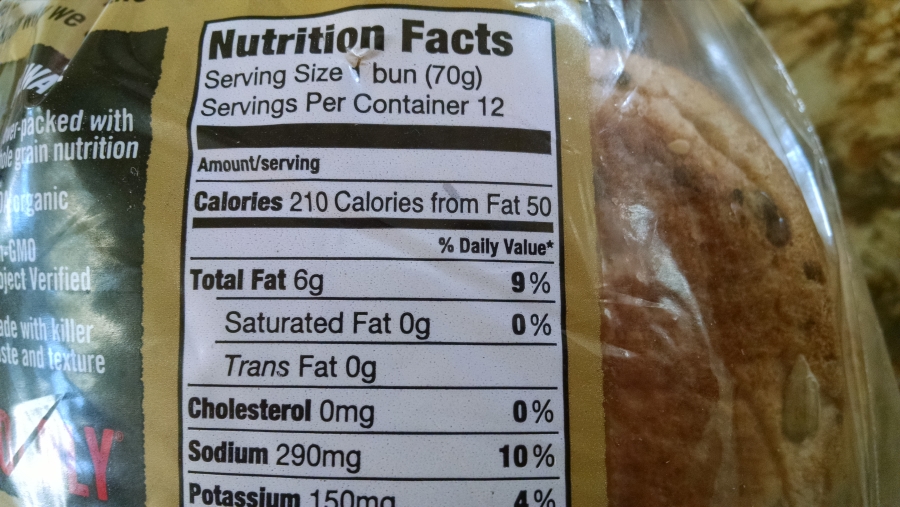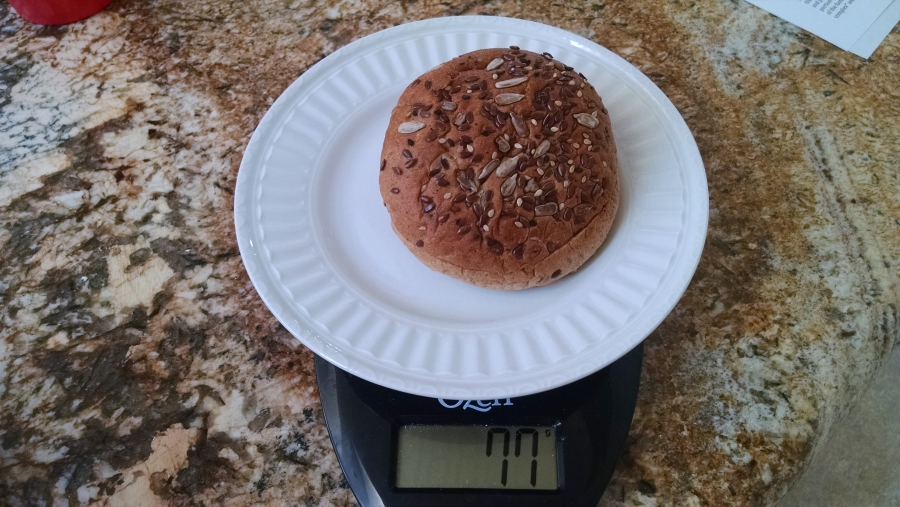When keeping track of the food you are eating it is imperative to weigh it. Think of nutrition labels more like guidelines. There is uncertainty in food label accuracy since the way food is processed will alter how many calories your body absorbs. Add to this the fact that items can differ from the packaging and your calories may be much higher than you anticipated.
Here’s a nutritional label for a bun.
The key thing that we will be focusing on is the grams in that bun. The bun has 70 grams with 210 calories. That may seem like a pretty high number of calories for bread, but keep in mind many breads are listed with one slice as the serving size. The calories are based off the size of 70 grams. What if the bun wasn’t 70 grams?
Turns out this one was 77 grams. Now 7 grams, not a big deal. Except that’s a 10% increase. If all your calories increased by 10% on a 2000 calorie diet, that would be equivalent to eating an extra 20 pounds of fat a year. That doesn’t seem nearly as inconsequential.
If you really want to be accurate, the best way is to use a scale. They can be picked up for just a few bucks. The one we used was the Ozeri Pro Digital Kitchen Food Scale. It has the ability to be zeroed out for quicker readings, can convert between multiple different units, and is apparently stylish black.


